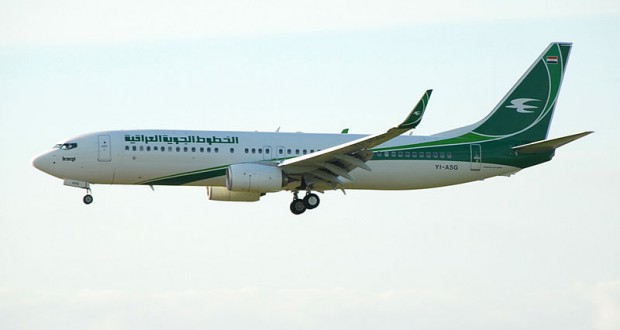Piloter der ender i slagsmål i cockpittet på grund af diskussion om en bakke med mad.
Det kan lyde som en dårlig joke, men det var ikke desto mindre tilfældet onsdag i sidste uge på et Boeing 737-fly fra det irakiske flyselskab Iraqi Airways.
Flyet med 157 passagerer om bord var på vej fra Mashhad i den norsøstligste del af Iran til den irakiske hovedstad, Bagdad, da flyets kaptajn og styrmand kom op at toppes i cockpittet i 37.000 fods højde (11.280 meter, red.). Det skriver den britiske avis The Independent.
Styrmanden har efter episoden formuleret et brev til ledelsen i Iraqi Airways, hvori han blandt andet skriver:
”Samtalen med piloten blev ophedet, fordi han forbød en stewardesse at levere en madbakke til mig under påskud af, at jeg ikke havde bedt ham om tilladelse,” lyder det, hvorefter situationen optrappedes, da kaptajnen havde spist sit eget måltid.
”Han slog og fornærmede mig, og det bevirkede, at der kom en sikkerhedsagent.”
Slagsmål fortsatte efter landing
Ifølge øjenvidner om bord skete der tilmed skader på flyets cockpit. På trods af den alvorlige konfrontation bragte piloterne dog flyet til sikker landing i Bagdad, men det er også blevet rapporteret, at det fysiske skænderi fortsatte efter landing.
”Piloten slog igen og fornærmede mig. Jeg var nødt til at forsvare mig selv,” har styrmanden ærligt angivet i sit brev efter slagsmålet med kaptajnen.
Iraqi Airways meddelte efter slagsmålet, at de to piloter bliver undersøgt. Det irakiske transportministerium undersøger nu de to stridende piloter, der begge er blevet suspenderet fra deres tjeneste efter striden på den internationale flyvning.
Og straffen vil blive hård. Piloterne er af transportministeriet blevet advaret om, at ”de vil ikke have nogen chance for at undslippe hårde straffe, og at de står over for de værste og mest alvorlige straffe,” som angiveligt minimum vil være flyveforbud resten af deres liv.
Flyveforbud i EU
Siden 2015 har Iraqi Airways været på EUs Air Safety List. En liste med flyselskaber, der enten har restriktioner eller totalt flyveforbud i EU-luftrum. Det irakiske flyselskab har imidlertid flyveforbud med restriktioner. Det vil sige, at selskabet gerne må flyve til EU-luftrum, hvis det anvender wetleasede fly fra en operatør, der overholder EUs sikkerhedskrav.
Det irakiske flyselskab har en rute fra Bagdad til Københavns Lufthavn. Da selskabet således ikke selv må flyve til den danske hovedstad, har man i stedet det slovakiske flyselskab AirExplore til at flyve for sig med en Boeing 737-800. Der er én ugentlig rotation mellem de to byer. På samme vis betjener Iraqi Airways blandt andet også Malmø, Stockholm og Frankfurt.
Iraqi Airways er grundlagt i 1945 og er det ældste flyselskab i Mellemøsten. Flyselskabet opererer fra basen i Bagdad International Airport på indenrigsruter og til regionale lufthavne som eksempelvis i nabolandet Iran. I øjeblikket har selskabet cirka 30 fly i forskellige størrelser og 40 destinationer.






